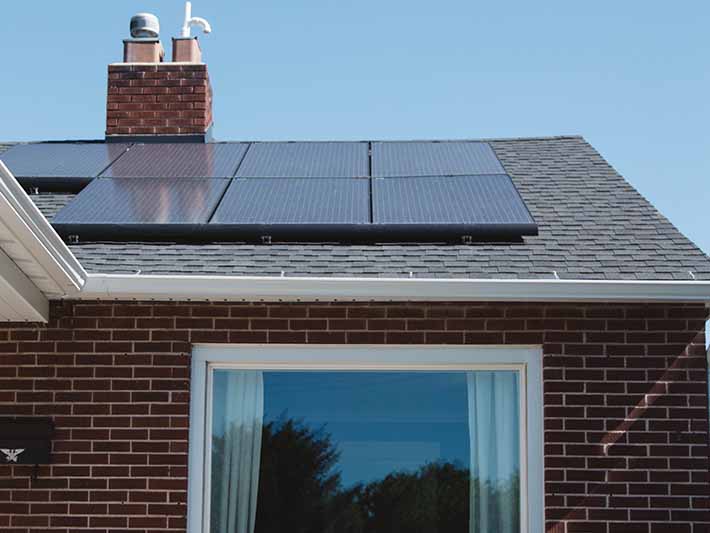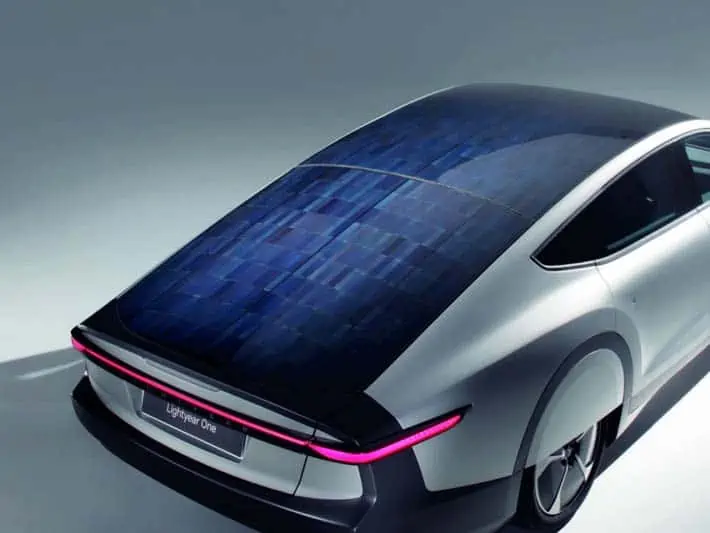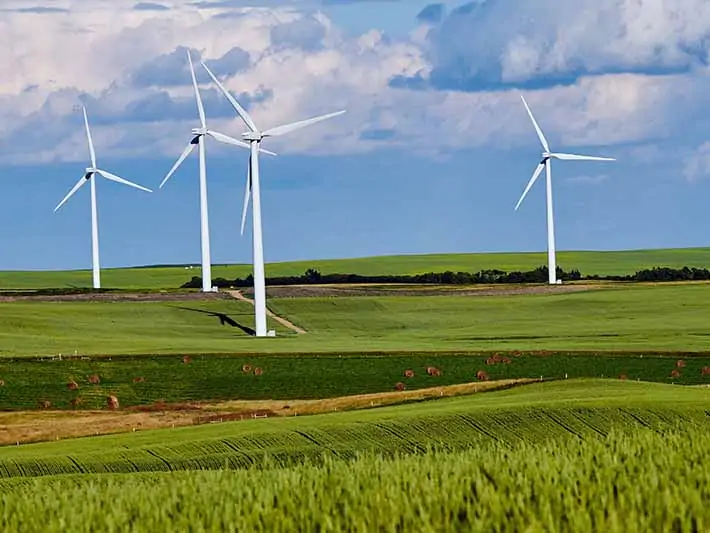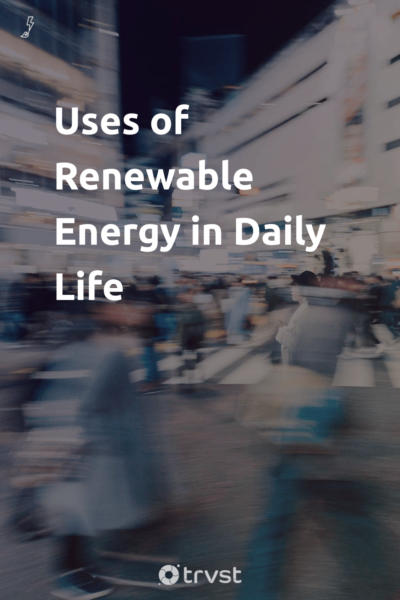Uses of Renewable Energy in Daily Life
We could all do a little more when we consider how we needlessly use energy. Taking stock of where we can benefit from using renewable energy in daily life can help our transition to cleaner, sustainable energy.
In fact, if we are going to reduce our use of fossil fuels, then we can make direct and indirect changes. If we fail to do this, we could see a global temperature increase of 2 degrees, and the effects could be catastrophic. While we can’t all afford electric cars, we can choose to walk or catch the train instead of driving. We can limit how much we use certain appliances around the home. Essentially, it is about switching where possible and making changes where required.
Researchers note that reducing demand will prove one of the most effective means to reduce carbon dioxide emissions and fight climate change. It will also reduce fuel poverty and increase economic productivity5. If we can all do this, we can reduce the amount of energy we use.
What’s more, if we can switch to renewable energy, we can also save money. Renewable energy is clean, and there is an endless amount of it. Once the systems have been put in place, our energy is cheaper and more efficient.
So, how can we find alternative sources of energy4? What changes can we make to our energy consumption? If we break it down and look at our options, we can soon identify just how easy it is to make a difference.
Various Uses of Renewable Energy in Daily Life
1. Opt For Solar Powered Lights
Many of us have garden lighting and security lighting. There is now a large range of solar energy lanterns available. As the batteries are charged using sunlight, we can then use the energy to power the lights during the evening.
It is a simple switch that can avoid lights being needlessly used. Yet, when they are used, they use an alternative power source, ultimately saving energy.
In fact, it is not just homeowners who can make the changes as businesses can too. Solar-powered lighting and solar ovens also make it possible for developing countries to move away from using kerosene. By reducing kerosene use, we reduce emissions from burning to light homes and the manufacturing process2.
2. Powering Homes with Solar and Wind Power

Most of us have access to energy from the sun and the wind. There is no shortage of either which means that we can harness both and power our homes, generate electricity, and lead to sustainable and off-grid energy at home.
It is a more common sight to see houses with solar panels on the roof. While this is not new, it is a technology that more of us are using. Systems are becoming cheaper and more accessible to many. As a result, almost 1 million homes in the UK have solar power, and 1.3 million in the United States.
Among the many advantages of solar energy, we can also utilize the energy from the sun to heat our homes. We can use it to heat water, and we can use it to power appliances.
Read more: Environmental Impact Solar Energy
Renewable energy use that gives back
Further, we can also take advantage of feed-in tariffs where homeowners can earn money by giving energy back to the grid. Despite this, renewable energy and solar energy, in particular, are still facing challenges. This can range from economic costs of production and even a lack of infrastructure to improve its installation and efficiency6. Therefore, there is still lots to be done.
Wind energy has many advantages. Depending on location, homeowners can install their own wind turbines. The UK, for example, has no shortage of wind. Winter is a particularly windy time of year. So, it would be possible to harness wind energy and use it to heat our homes when we need it. Installing at-home wind turbines can help reduce energy use, and it can also help to reduce energy bills.
As it currently stands, the UK has a wind energy capacity to power 14 million homes through the grid. This renewable source of energy can cut greenhouse gases by 25 million tonnes each year. Just by making a switch to a renewable energy supplier, more of us can access this clean energy.
Elsewhere, some countries, such as Iceland, have almost unlimited access to geothermal energy. Here people in these areas can use geothermal power from the ground to heat hot water, heat their homes, and spin turbines to produce electricity.
Read more: Environmental Impact of Geothermal Energy
3. Using Bioethanol to Power Cars
Bioethanol has long been seen as a potential replacement for petrol.
Estimates claim that there could be 1.5 billion cars on the road in just five years. If this is the case, then we will continue to need and produce a lot of fuel. The production of petrol creates CO2 emissions and as we all know, using it also produces harmful emissions.
So, it is about time that we made the switch where possible.
Bioethanol is a substitute for petrol, and we create it through the primary sugar fermentation process3.
Cars make up 22% of all greenhouse gas emissions in the UK alone. This form of fuel comes from a renewable source such as crops. Therefore, it does not come from a finite source. However, if we make the switch, then we will reduce CO2 emissions directly, but the crops that are grown will also help reduce them.
We could also include electric cars as these are now becoming more mainstream. We are making progress in several areas if we can accelerate the removal of fuel-driven vehicles from the road and charge our vehicles using renewable energy.
New Developments In Renewable Energy in Daily Life
Solar Powered Cars
We now have the ability to power cars using solar panels. Previously, the technology was unavailable, but advances have made it possible. What was once a thing of sci-fi movies is now a reality.
As solar panels have become thinner, lighter, and more flexible, it has meant that we can install them on car roofs and bonnets1. As a result, a number of manufacturers have unveiled some of the first vehicles that are run using the sun as an alternative energy source. Hyundai has released its own vehicle, while Lightyear One has also released its own prototype.

Kinetic Pavements
As we continue to ponder new ideas and ways of using the energy we create, new concepts, such as kinetic pavements, also start to come up.
When we consider how many thousands of miles of pavements we have in the world and how many people use them, we are missing out on energy potentially going to waste. Fortunately, innovative ideas and technology make it possible to use this energy.
Pavegen, a London-based start-up, has developed kinetic pavements. Using tiles made from recycled tires, they flex when walked on. Every step creates enough energy to power a street light for 30 seconds. If we can store the energy in batteries, we can then use it when we need it. While this might not seem a lot, the potential is undoubtedly there for kinetic pavements7.
In busy, bustling cities, the footfall can fall into the thousands each day. Imagine the amount of energy we could generate every day if all our pavements were kinetic.

Making an Indirect Change
Of course, we can aim to increase our use of renewable energy. However, renewable energy resources can be hard to come by, particularly for homeowners. It’s not always practical to install solar or wind. Despite the advances in technology and new innovative ideas, sometimes, it is better to take a “prevention is better than cure” approach.
There is no doubt that increasing our use of renewable energy in daily life is a move we can all make to help reduce the demand for polluting fossil fuels. That is a clear path to a sustainable and more environmentally friendly future. However, where this is not possible, we can make a change indirectly. By reducing our use of non-renewable energy, we can help drive down greenhouse gas emissions.
So, how can we do this in our daily lives?
Consider What You Drink
We should all try to cut down on manufactured sugary drinks. We should also avoid purchasing drinks that come in plastic bottles. Producing plastic bottles eats into our petroleum and natural gas resources faster than needing none when we get our water from the tap.
What’s more, we also have to dispose of these bottles, which further draws on energy resources. So, we should be saying no to plastic bottles, and switching to reusable bottles and cups where possible.
Avoid Heating the Home Unnecessarily
Many of us are guilty of leaving our heating on when it is not needed. We might be looking to keep the house warm in preparation for returning from work when we really don’t need to.
Most of us live in homes that have thermostats with timers. Therefore, we can time our heating systems to come on at scheduled times during the day. So, a couple of hours in the morning and a few hours in the evening can reduce the amount of energy we use and save electricity at home.
Along with this, you can also drop the temperature by a degree or two and not notice the difference. What’s more, this will also help to save on fuel bills.
Don’t Use the Tumble Dryer
Tumble dryers use a vast amount of energy to dry your clothes. Even though they are more energy-efficient than ever before, they are still not good for the environment.
When the weather is good in the summer months, we can hang our clothes outside to dry naturally. In certain situations, it is also possible to do this in the winter when the conditions are right. Despite this, we can use clothes airers in the home that help clothes to dry naturally. It might take longer, but we can significantly reduce our need for dryers with the correct planning and preparation.
Create Less Waste
We can all be more mindful of what we buy. If we opt for packaging that can be recycled and reused, then we can reduce waste. When we do this, we can also reduce processes and energy consumption. All of this can help to reduce CO2 emissions.
There is so much more that we can do
Reducing CO2 emissions and fossil fuel use almost requires a two-pronged attack. On the one hand, we can attempt to use more renewable energy sources. On the other hand, we can alter our thinking and reduce our use of non-renewable energy.
If we can bring the two together, we have the potential to demonstrate that together we can reduce the demand for non-renewable energy. The aim is to reduce emissions and increase the use of renewable energy. Once one surpasses the other, we are on the road to a bright future and a better environment.


| 1 | S. Ahmed, A. H. Zenan and M. Rahman, "A two-seater light-weight solar powered clean car: Preliminary design and economic analysis," 2014 3rd International Conference on the Developments in Renewable Energy Technology (ICDRET), Dhaka, 2014, pp. 1-7. doi: 10.1109/ICDRET.2014.6861646" |
| 2 | Ramchandra Pode, Solution to enhance the acceptability of solar-powered LED lighting technology, Renewable and Sustainable Energy Reviews, Volume 14, Issue 3, 2010, Pages 1096-1103, ISSN 1364-0321, https://doi.org/10.1016/j.rser.2009.10.006. |
| 3 | Ramesh Chander Kuhad, Rishi Gupta, Yogender Pal Khasa, Ajay Singh, Y.-H. Percival Zhang, Bioethanol production from pentose sugars: Current status and future prospects, Renewable and Sustainable Energy Reviews, Volume 15, Issue 9, 2011, Pages 4950-4962, ISSN 1364-0321, https://doi.org/10.1016/j.rser.2011.07.058 |
| 4 | Taylor, R.H. Alternative energy sources for the centralised generation of electricity. United States: N. p., 1983. Web. |
| 5 | Steve Sorrell, Reducing energy demand: A review of issues, challenges and approaches, Renewable and Sustainable Energy Reviews, Volume 47, 2015, Pages 74-82, ISSN 1364-0321, https://doi.org/10.1016/j.rser.2015.03.002 |
| 6 | Ehsanul Kabir, Pawan Kumar, Sandeep Kumar, Adedeji A. Adelodun, Ki-Hyun Kim, Solar energy: Potential and future prospects, Renewable and Sustainable Energy Reviews, Volume 82, Part 1, 2018, Pages 894-900, ISSN 1364-0321, https://doi.org/10.1016/j.rser.2017.09.094. |
| 7 | F. Duarte, F. Casimiro, D. Correia, R. Mendes and A. Ferreira, "A new pavement energy harvest system," 2013 International Renewable and Sustainable Energy Conference (IRSEC), Ouarzazate, 2013, pp. 408-413. doi: 10.1109/IRSEC.2013.6529704 |
